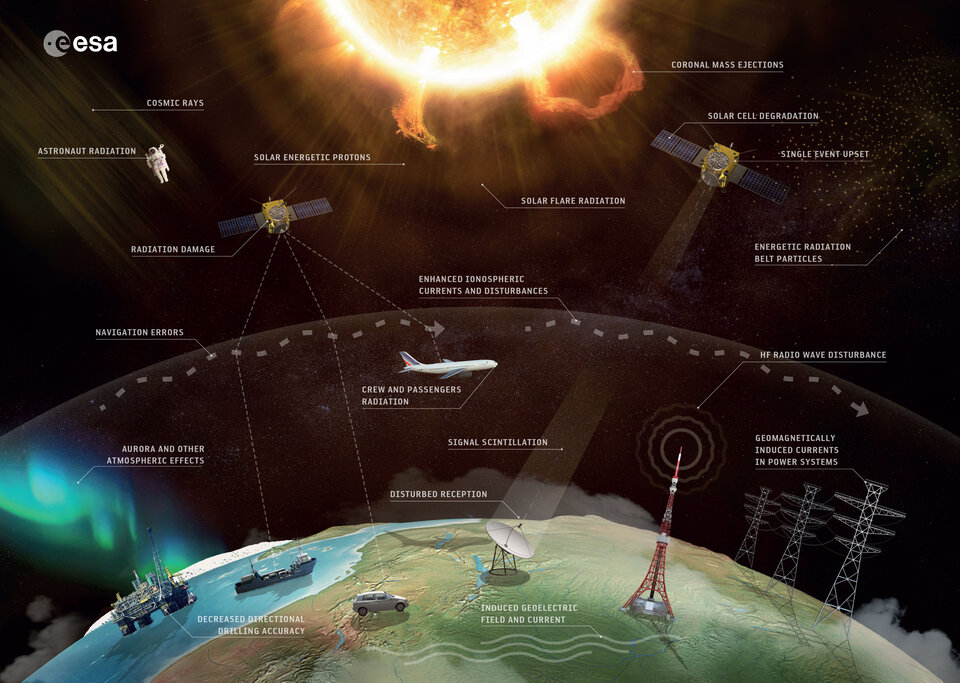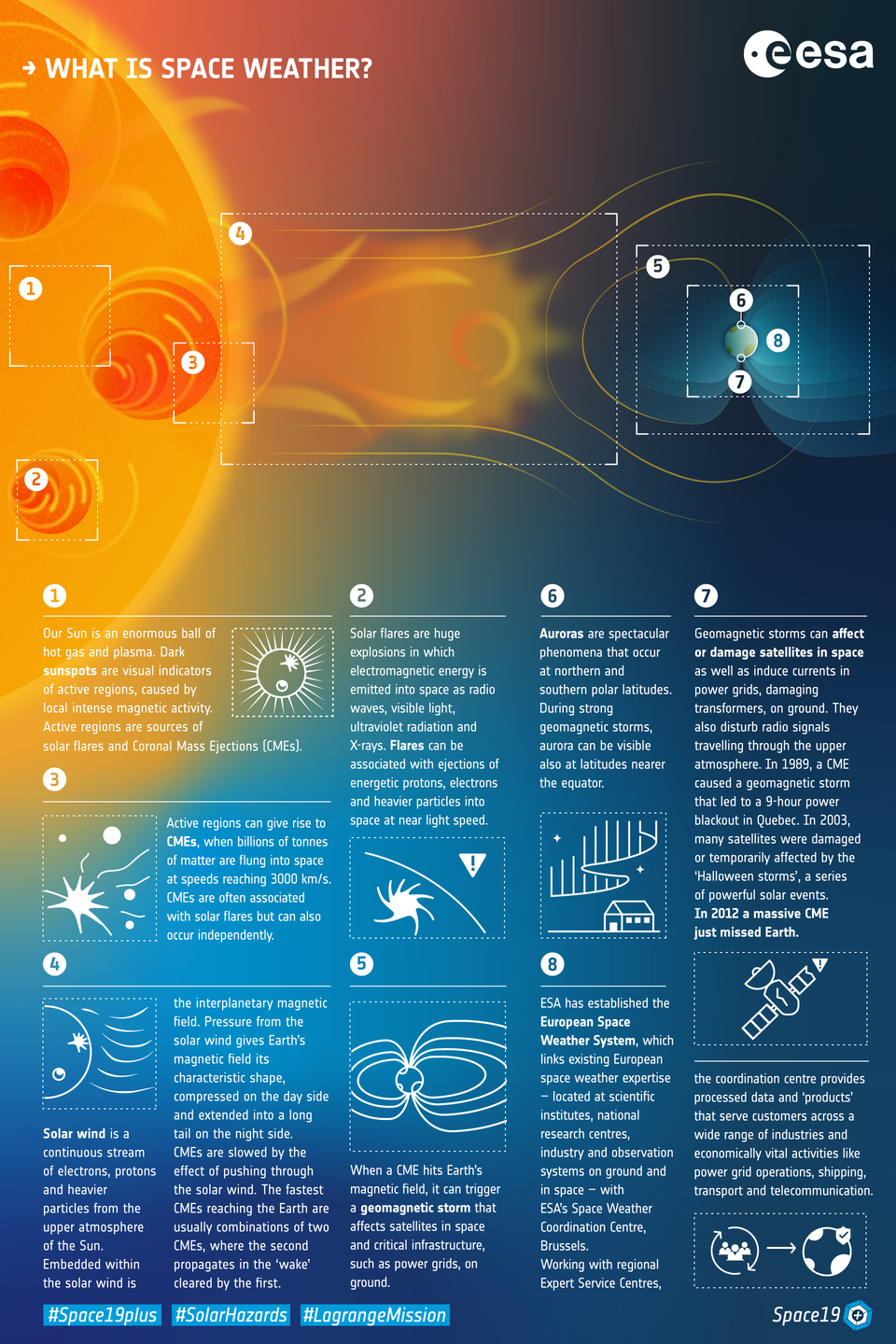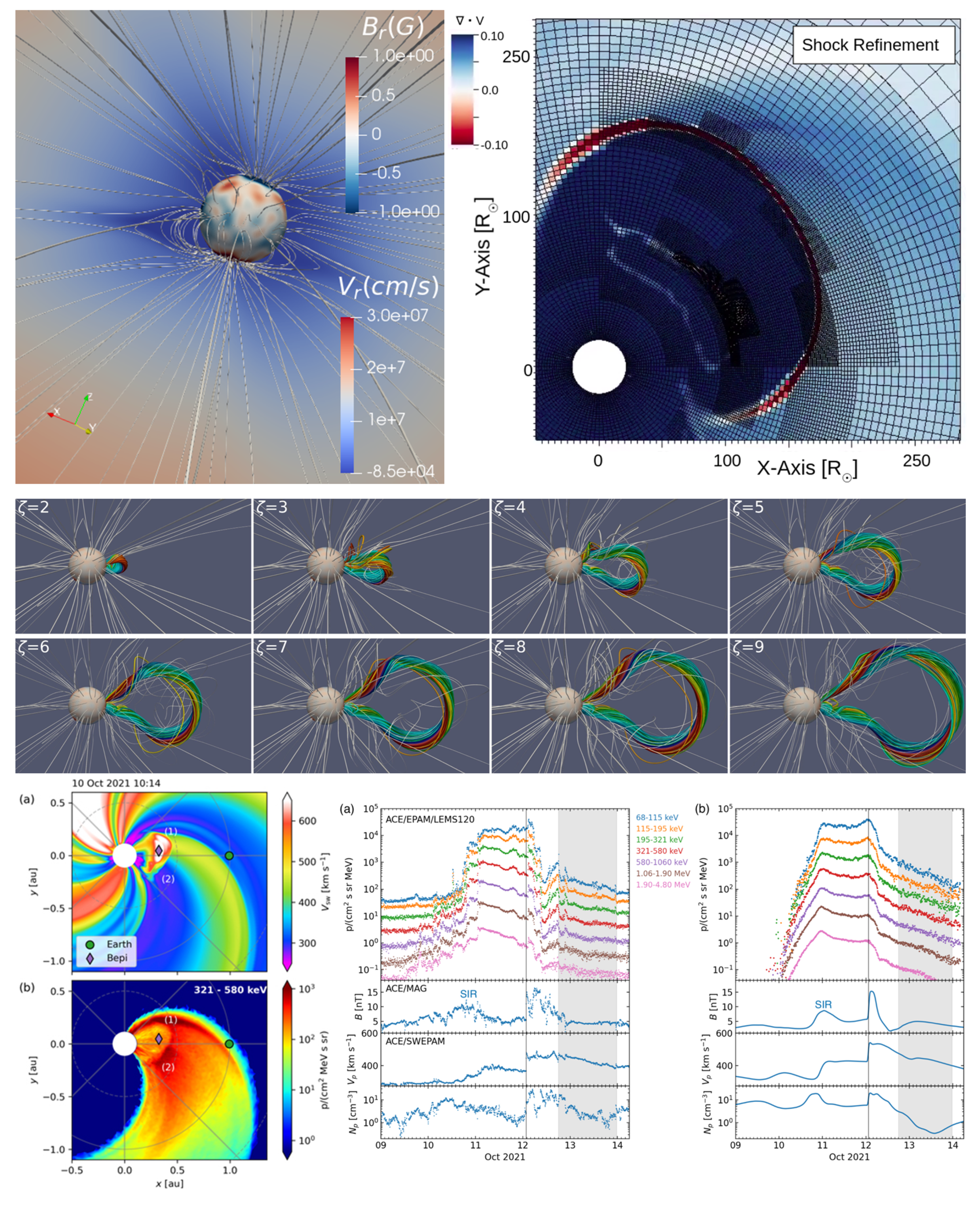New Models Illuminate Sun-to-Earth Space Weather Dynamics
Much like the daily weather forecasts we use to help us arrange our plans, space weather forecasts rely on cutting-edge models for accurate predictions. These physics-based models have been developed to simulate parts of the Sun-to-Earth system, which consist of plasma, magnetic fields and energetic charged particles.
“Space weather, akin to Earth's weather, is governed by dynamic phenomena with storms becoming more frequent and severe when the Sun is more active. Solar activity is currently approaching the peak of its approximately 11-year cycle. However, unlike traditional weather, space weather processes are governed by charged particles and induced magnetic fields instead of viscosity and aerodynamic turbulence,” explains Piers Jiggens, the Technical Officer for the activity and part of ESA’s Space Environment and Effects section.
A recent advancement funded by GSTP and led by KU Leuven, Belgium, on heliospheric modelling techniques is paving the way for a new system of coupled models for forecasting space weather in more timely and accurate ways, improving our understanding of how storms evolve and preparation for the unpredictable events occurring between the sun and Earth.
Initially models are developed in the form of scientific codes but require additional technical development before they can transition for use in operations. As part of the activity three key modelling assets have been matured and refined for operational use, focusing on the region between the Sun and Earth's magnetosphere. The first, named COCONUT, is a cutting-edge magnetohydrodynamic (MHD) model, providing a more advanced and reliable solution for the solar corona. The second model, Icarus, takes the simulation from the solar corona to Earth, using Adaptive Mesh Refinement (AMR) to automatically focus processing power on areas of interest, such as eruptions called Coronal Mass Ejections (CMEs) and the shocks the induce, crucial for real-time forecasting. The third model, PARADISE, simulates high-energy particles accelerated by these coronal mass ejections, enabling the prediction of space storms.

One of the challenges the project addressed is the acceleration of particles by CMEs, with a focus on predicting the most energetic particles arriving in radiation storms as these pose the most significant hazard. Coronal mass ejections in extreme cases may propagate to the Earth in less than 24 hours, whilst accelerated particles may arrive in 30 minutes from the time of the solar eruption. The ability to simulate these events quickly is crucial for timely predictions.
The final part of the activity involved coupling these models in ESA’s Virtual Space Weather Modelling Centre (VSWMC), part of the Space Weather Network managed by ESA’s Space Weather office based in ESOC, Germany.
"The VSWMC gathers simulation models from the Sun's surface, heliosphere and up to the Earth's magnetosphere and even upper atmosphere. It enables forecasts in the service of end-users - satellite operators, human spaceflight or ground power operators, or scientific teams – based on coupled model chains, transferring plasma data from one to the next - and in some cases bi-directionally - in order to perform simulations though the whole solar system and eventually provide accurately and rapidly forecast data at the points of interest, spacecraft of planet" explains Grégoire Déprez, also working in ESA’s Space Environment and Effects section.

The results of the activity so far have been promising, with the final stages of validation underway. The focus is on forecasting space weather events, especially those involving high-energy particles that can pose radiation hazards to spacecraft and humans.
Validation of these models is ongoing and researchers are working to resolve past space weather events, ensuring the models would have simulated them in the same way they played out. The ultimate goal is to update operational systems, making these advanced forecasting capabilities available to space weather experts across Europe.


